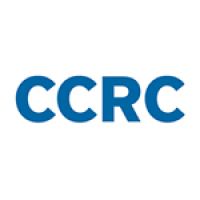By Lauren Schudde and Wonsun Ryu
In the past two decades, high schools and colleges across the country have ramped up efforts to provide dual enrollment coursework. As dual enrollment participation has expanded, so too have the types of programs and courses offered. Differences in how dual enrollment courses are set up have the potential to shape students’ course experiences, course performance, and their subsequent college enrollment decisions.
But little research has been done on how these differences affect students’ experiences and outcomes. As policymakers, educational administrators, and practitioners continue to scale dual enrollment programming, they need more information about how to design and structure dual enrollment courses in ways that are effective for students.
In a new CCRC working paper, we used student-level administrative data from Texas to examine how recent students at public comprehensive high schools experienced dual enrollment, including which dual enrollment courses students take and how they are taught, along with how dual enrollment course characteristics predict students’ course and college-enrollment outcomes. We focused on students taking dual enrollment à la carte rather than through more formalized sequences at Early College High Schools or Pathways in Technology Early College High Schools (P-TECHs), since à la carte enrollment is by far the most prevalent form of dual enrollment in Texas and nationally. We illustrated differences in the profiles of students who take academic compared to career and technical education (CTE) dual enrollment courses. To look more deeply at those differences, we examined the relationships between course modality, instructor, and location separately for academic and CTE dual enrollment courses, using regression analysis to control for a rich set of student- and institution-level factors.
We found that numerous dual enrollment course features are associated with students’ course performance and subsequent college-going outcomes, with sometimes conflicting findings for academic compared with CTE dual enrollment coursework. The following are some highlights.
- Modality. In both academic and CTE dual enrollment courses, course completion and grades were worse in sections that were online than in those that were face-to-face. But we also found that, for academic dual enrollment courses only, taking courses online positively predicted college enrollment.
- Course location. Taking dual enrollment coursework on the college campus, compared with at the high school, is associated with lower grades and a lower probability of passing but is positively associated with enrolling at a community college after high school (there is no relationship between course location and subsequent enrollment at a four-year institution).
- Instructor type. In both academic and CTE dual enrollment, taking the course with college faculty—compared with a high school teacher—negatively predicts course passing and final course grade, which aligns with some prior evidence that high school instructors may be more lenient (and, according to some) less demanding than college instructors. We saw some evidence, primarily for part-time, non-tenure track instructors, that taking the course with a college instructor also led to higher college enrollment after high school.
- Timing of courses in high school career. Compared with taking dual enrollment courses in twelfth grade, taking them earlier in the high school career is negatively associated with course success and with enrolling in a community college after high school—the sooner students started to take dual enrollment courses, the less likely they were to attend a public two-year college after high school (with null effects for attending a public four-year college).
- Other factors. Some dual enrollment course designs shape student outcomes differently across course types. For example, in academic dual enrollment courses, larger class sizes are associated with a higher probability of course passing and higher course grades, whereas in CTE dual enrollment courses, which tend to require more hands-on experience, larger classes predict lower course grades. Passing the dual enrollment course was an important predictor of going to college after high school, and passing the course dramatically increased students’ probability of entering a public university.
In general, students who take dual enrollment, particularly those in academic dual enrollment courses, tend to have relatively high rates of course completion and college-going. As is clear from the detailed results presented in the report, the differences we observed across course modality, location, instructor type, and other factors, though statistically significant, are relatively small. So these findings can provide guidance to educators on how to further optimize student outcomes.
Many community colleges rely on high school students taking dual enrollment to bolster their enrollment numbers, especially in the face of downward trends in community college enrollment across the country. At the same time, students and their families expect that dual enrollment coursework will serve as an on-ramp to college. To serve their own needs and the needs of this growing population of students, community colleges must focus on building dual enrollment programming that supports students’ successful performance in individual courses but also their subsequent college-enrollment outcomes.
We understand that community college and high school stakeholders may not be able to easily change some elements of dual enrollment course design, such as their primary instructional delivery mode, location, or instructor type. However, our results can still offer guidance for college and K12 leaders as they consider tradeoffs—and perhaps additional supports they can offer—for certain types of dual enrollment coursework. For example, given that dual enrollment courses taught with a high school teacher have higher pass rates but lower college going rates, high school and college leaders might do more to connect students to the college experience through campus visits or faculty guest speakers, Since dual enrollment courses taught by a college instructor have lower pass rates but higher college enrollment rates, college leaders might consider working closely with partner high schools to identify struggling students and to provide additional academic supports to ensure students are successful in their dual enrollment coursework.
Overall, in designing evidence-based dual enrollment practices, educational leaders will have to balance the interests of various institutional partners, weighing the potential influence on both short- and long-term outcomes.
Lauren Schudde is an associate professor of educational leadership and policy and Wonsun Ryu is a postdoctoral scholar at The University of Texas at Austin.
The research on which this blog and the associated report are based was funded by the Bill & Melinda Gates Foundation.





